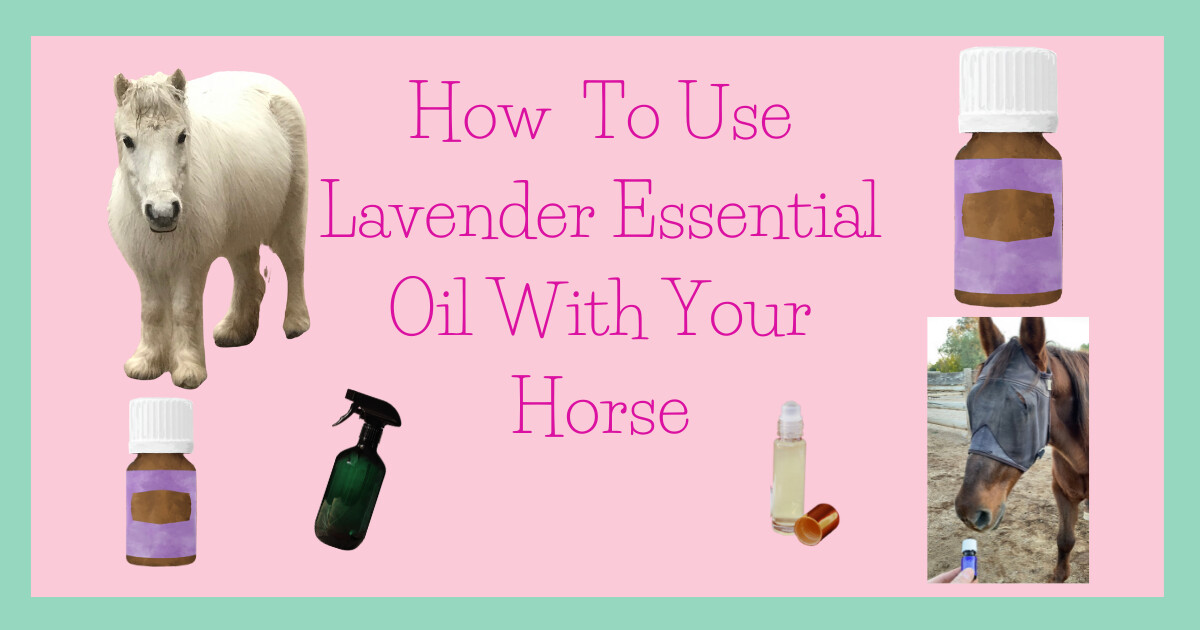
Essential oils are gaining in popularity and you may have heard of Lavender essential oil...aka 'the Swiss Army Knife' of essential oils. With a multitude of uses, it has definitely earned the title. Common questions I often get asked are...
What can Lavender essential oil be used for? or..How do you use Lavender oil on horses? and..How do you apply lavender oil to horses? Todays blog has got ya covered! Let's chat Lavender essential oil, what you can use it for, and how to use it with your horse.
First, if you're new to using essential oils with your horse, grab my free guide to help ya get started where we go over what you need to know to use essential oils safely and easily with your horse, including safety and dilution, click HERE
I think Lavender's probably one of the most well known essential oils and should be given credit for bringing essential oils back into interest in the modern world with the help of a frenchman. While essential oils have been around a long, long time, with many references in the Bible, mentions from ancient Greece, and cultures across the globe, it was in the early 1900's that they re-surfaced in large part from the work of Rene-Maurice Gattefosse.
According to the Gattefosse Foundation (https://www.fondation-gattefosse.org/en/rene-maurice-gattefosse/) Gattefosse worked in his family's perfume business in the early 1900's. Lavender was an essential part of the perfume industry and Gattefosse is credited with the development of French Lavender, even creating a union of Lavender producers. He published numerous articles on lavender and its therapeutic properties. In the early 1900's, he burned his hands badly while working in the lab. He had heard lavender essential oil was good for burns and had a miraculous recovery of his burns using lavender essential oil. It inspired him on a new mission to convince the medical world of lavenders healing properties, and he dedicated the rest of his life to the research and development of essential oils for medical purposes. When his brother died of infection during the war, he embarked on developing an aromatic antiseptic. He continued to research and publish about essential oils until his death in 1950.
So what can you use lavender for?
Lavender can be a very calming oil. Research conducted at the University of Arizona ( https://phys.org/news/2018-07-calmer-horse.html) and published in the Journal of Equine Veterinary Science found "significant signs of stress reduction in horses that inhaled lavender from a diffuser"
Any situation where you think your horse would benefit from more relaxation would be a time you want to pull out the oil and have your horse take a whiff. Simply apply a drop to the palm of your hand, rub your hands together, and offer to your horse. If they like it, let them inhale it for as long as they want. Then, I like to the apply the leftover oil in my hands, to the back of my neck. I become a walking diffuser, stay calm myself, and have a more relaxed neck!
Aromatherapy diffuser jewelry can be a fun option to be a walking diffuser as well. Trailering, veterinary and farrier visits, grooming , tacking up, attending clinics...these situations and more could benefit from some Lavender oil. You can also add a few drops to cotton balls or wood clothespins and stash in your trailer or stall. Keep out of reach of your horse tho'. If you have electricity in your barn, you can run an ultrasonic diffuser.
Lavender can be beneficial for the skin and coat. One of my favorite ways to use it is by making a mane and tail de-tangler and conditioner. For my favorite recipe click HERE. It adds a nice shine and a calming aroma. During shedding season and in the summer when it's so dry and dusty, I also use this recipe to help with grooming. It keeps the dust down. Pesky annoyances also tend to not like the aroma!
Lavender can also be used to help with muscle tension by massaging it into hard working muscles.
It's also very popular in many food and dessert recipes and contains antioxidants. I love me a hot lavender latte-lol. In people, when taken as a dietary supplement it may provide immune support. It stands to reason that our horses could receive similar benefits. Be sure to only use essential oils labeled for ingestion such as Young Living's Vitality™ line. You can add a drop to your horses grain and see if they like it. My horses like the smell and taste of Lavender and I will add about 3 drops in their grain bucket when traveling. Every horse is different, and essential oils are super concentrated, so start with a drop and see if your horse likes it too.
Now you might be asking 'how do I apply lavender to my horse'?
First we have to chat about 2 key factors to putting any essential oil on your horse-quality and dilution. Not all essential oils are created equally. There is minimal regulation in the industry and many essential oils sold on the market are synthetic or diluted with other ingredients. To safely apply an essential oil to your horse, make sure you are buying a premium, high quality essential oil. Read the label on the oil you are buying and avoid buying any oil with the word fragrance on the label. Ask the following questions of any company you're buying essential oils from.
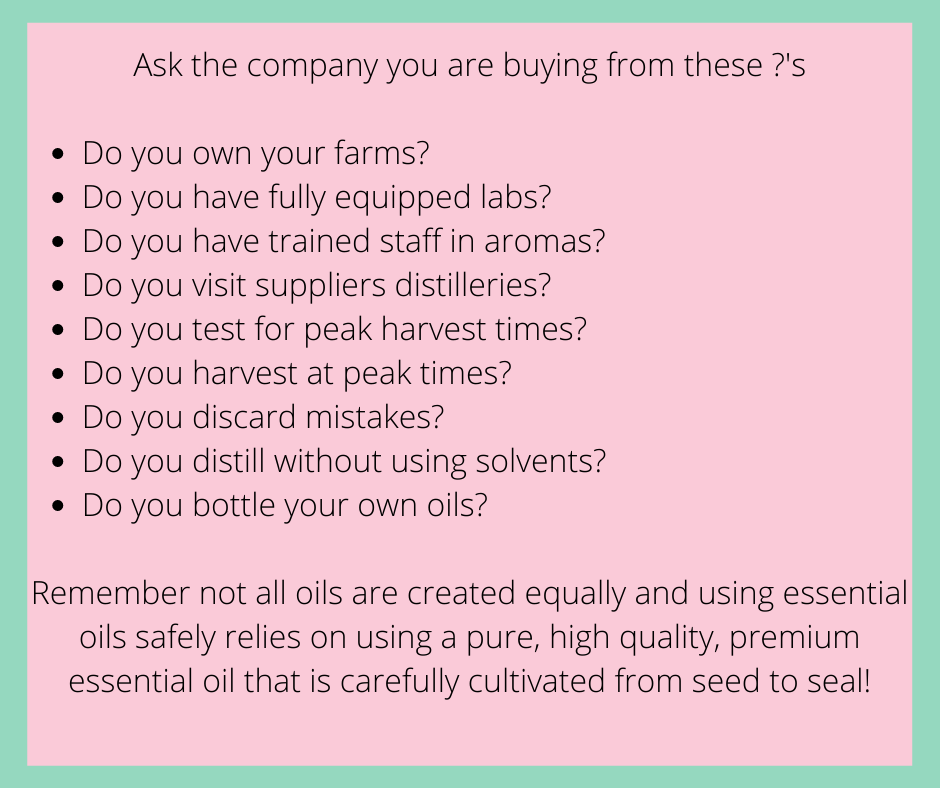
I like Young Living™ and you can read about their Seed To Seal™ guarantee HERE.
Now, let's talk about how you dilute Lavender essential oil.
To dilute, I like the easy button. I simply apply a dollop of carrier oil (a carrier oil is simply a fatty oil like a vegetable oil, that is perfect to 'carry the essential oil') to the palm of my hand, then add a drop or 2 of the essential oil, rub my palms together and apply to the desired area. There are dilution guidelines for percentages, but I have been using the dollop method for over 7 years now and have yet to have a problem...from my under 200 pound minis to my large and in charge draft cross mare. If you want to dilute by percentage, generally a 5-10% dilution is adequate. Keep in mind that horses with sensitive skin...think any pink skin and redheads....may need more dilution. Watch the area for any signs of a reaction, such as raised hair, swelling, itching, or biting of the area. If that occurs, simply add more carrier oil. Essential oils like fat, so when you add more carrier oil, it further dilutes the essential oil and slows down the absorption rate by the body to a tolerable level. Water and essential oils don't mix, so adding water usually only makes the reaction worse by driving the essential oil into the skin.
If you want to dilute by percentages, download my 'Quick and Easy Dilution' PDF for horses HERE
You might be asking if you can use Lavender oil without a carrier oil and if it's safe to use Lavender undiluted? Lavender is a mild essential oil and can be used undiluted. However, I recommend that you dilute it, especially if you are new to using essential oils with your horse. Dilution makes it even safer to use and minimizes any potential skin reaction. Dilution also helps your essential oils last longer and be more economical. Since essential oils are extremely concentrated extracts of plants and a little goes a long way, you only need minimal drops and dilution is helpful for applying and using the oil on a large area.
What carrier oil should you use? Glad you asked :)
I like olive oil, coconut oil, or fractionated coconut oil. Olive oil simply because I always have it. It's a thick oil and stays on the skin longer, so it works well, but can leave a greasy feel. It also has an aroma to it that may not be preferred for some recipes. I prefer the fractionated coconut oil, which is simply coconut oil processed to stay liquid, as it has no aroma and absorbs quickly, without leaving an oily residue. It's also very cost effective. Regular coconut oil is also a good option. I always tend to have it as well and it's inexpensive. It can add an amazing coconut aroma to recipes, and works great for a hoof moisturizer. In winter tho, it's hard to scoop out.
You can make a roll on for topical use. There are a couple of ways to create a roll on:
1: Purchase a roll on top from Amazon or your essential oil company (make sure the description says it will fit the size of essential oil bottle you have). Use an empty essential oil bottle that you have, pop the orifice reducer off, add desired number of essential oil drops based on how much you want to dilute it, add a liquid carrier oil, and then add the roll on top. Gently invert it to mix. Then you have a pre-diluted essential oil roll on.
2: Purchase a roll on bottle and top from Amazon. I like the 10 ml size. Add desired amount of essential oil based on how much you want to dilute, then fill up with a liquid carrier oil. I usually add about 10 drops to a 10 ml roll on, which is about a 5% dilution ratio.
For a step by step guide to creating a roll on, click HERE
The roll on makes it easy to have diluted Lavender essential oil at your fingertips. Now, you can:
-Roll it on any area of concern with the skin
-Roll it onto your palms and then hand comb thru the mane and tail
-Roll some on your horses poll or chest in any situation that your horse may get upset in
If you are at a show, be aware that some governing bodies will test for lavender. If that's the case, simply use it aromatically instead. Apply a drop to your hands and let your horse smell for as long as they want, then put the excess on you as a perfume. You will then be a walking diffuser to help create a more relaxing atmosphere.
-Roll on the abdomen for digestion
-Roll on stocked up legs
-Roll on bug bites, bumps, or bruises
Sometimes when applying lavender essential oil to skin, it's easier to spray, rather than roll. You can mist the area around your horse when needed as well. To make a Lavender Spray:
Add 12-20 drops Lavender essential oil to a 2 oz. glass spray bottle. Add 10 drops of a carrier oil or a pinch of salt to help the essential oil mix better in to the water. You can leave this out, but the essential oil will sit on top of the water, so it's less ideal. Fill up the remainder of the bottle with distilled water. You can use tap water but distilled water has the impurities removed, so I like it better. Make sure you shake it well before every use. For a step by step guide to making a spray, click HERE!
So, add Lavender essential oil to your 'tool box' and keep it in mind the next time you head to the barn!
If you're ready for a deeper dive in using essential oils with your horse, check out my mini course "Oily Horse Intro" where we dive into the what, where, how, and why, of getting started using essential oils with your horse...safely and easily! Check it out HERE!
Remember, using essential oils with your horse is not a substitute for regular veterinary care and statements made have not been evaluated by the FDA, nor are they intended to diagnose, treat, or cure any disease.
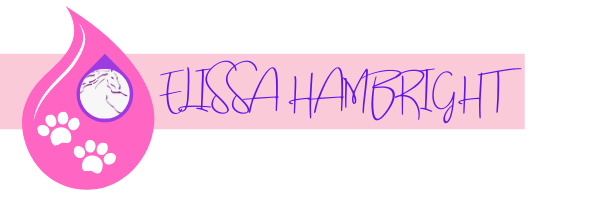

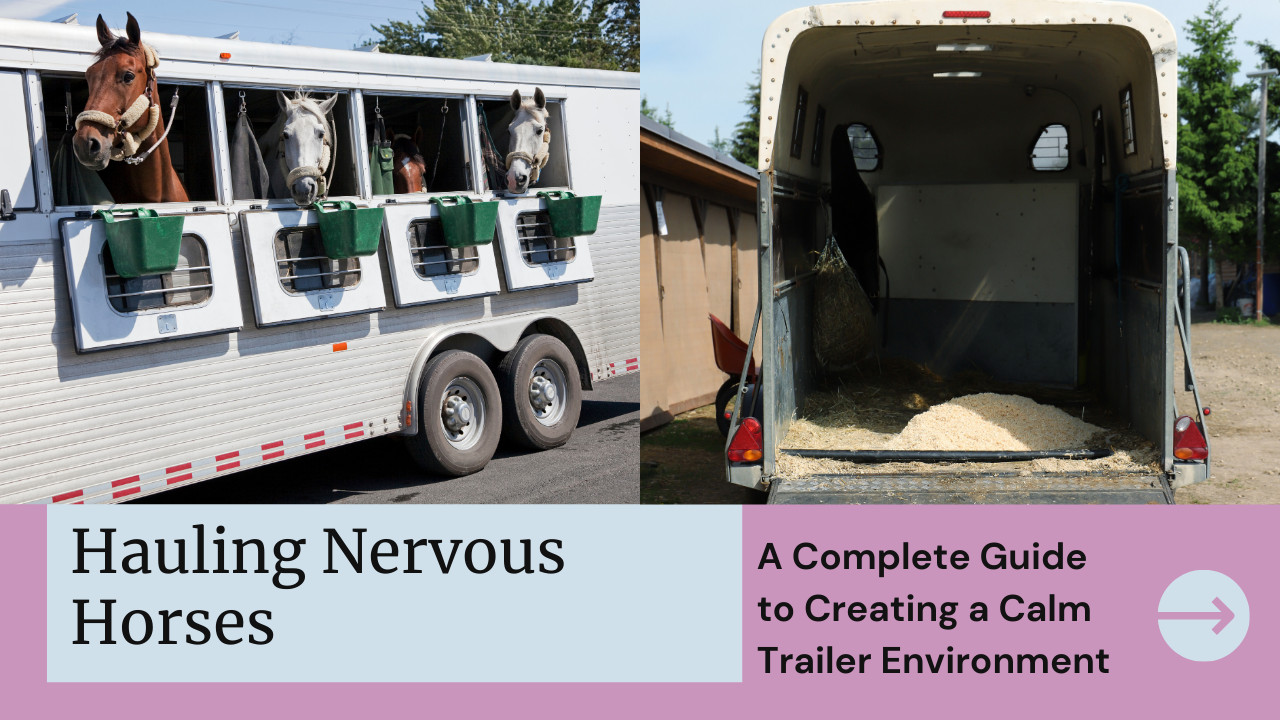
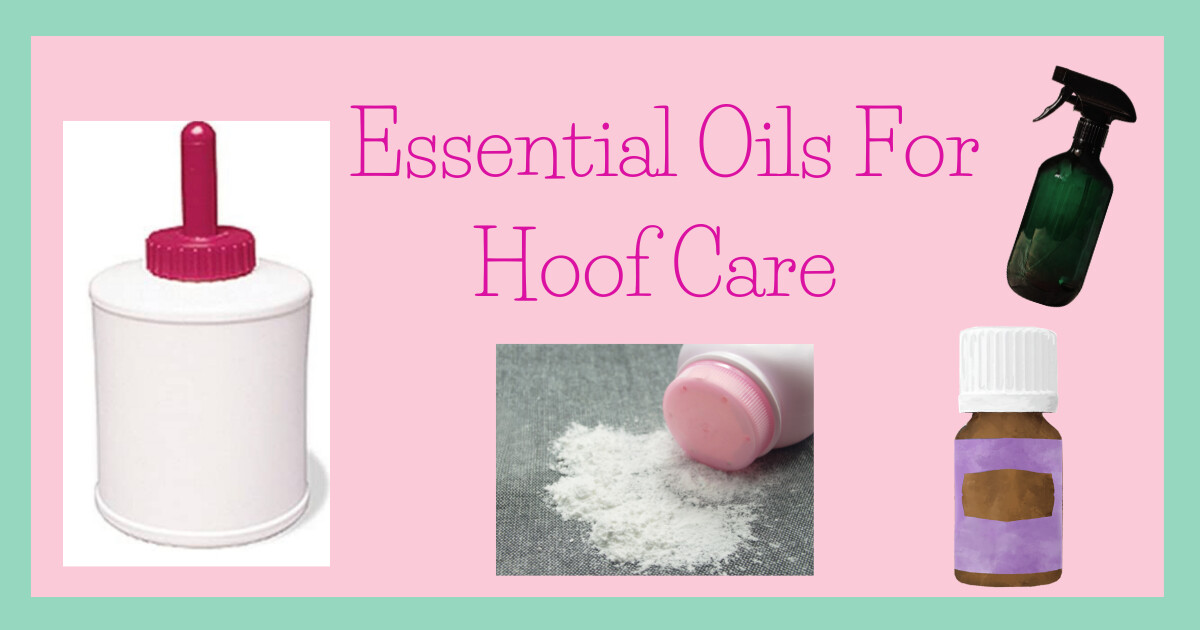
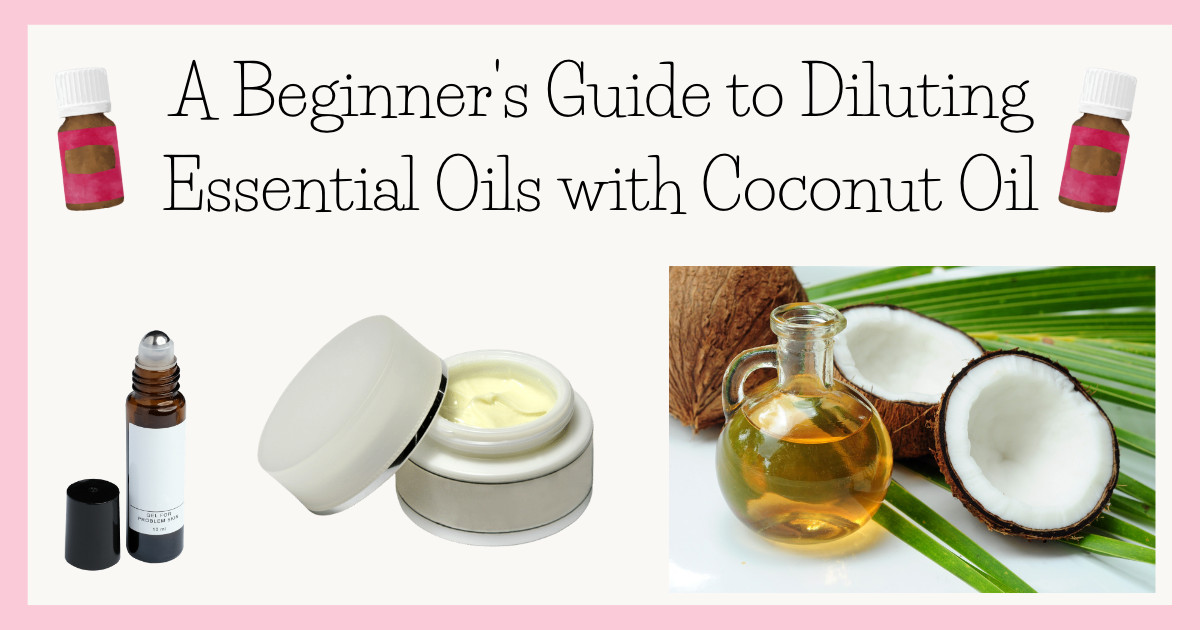





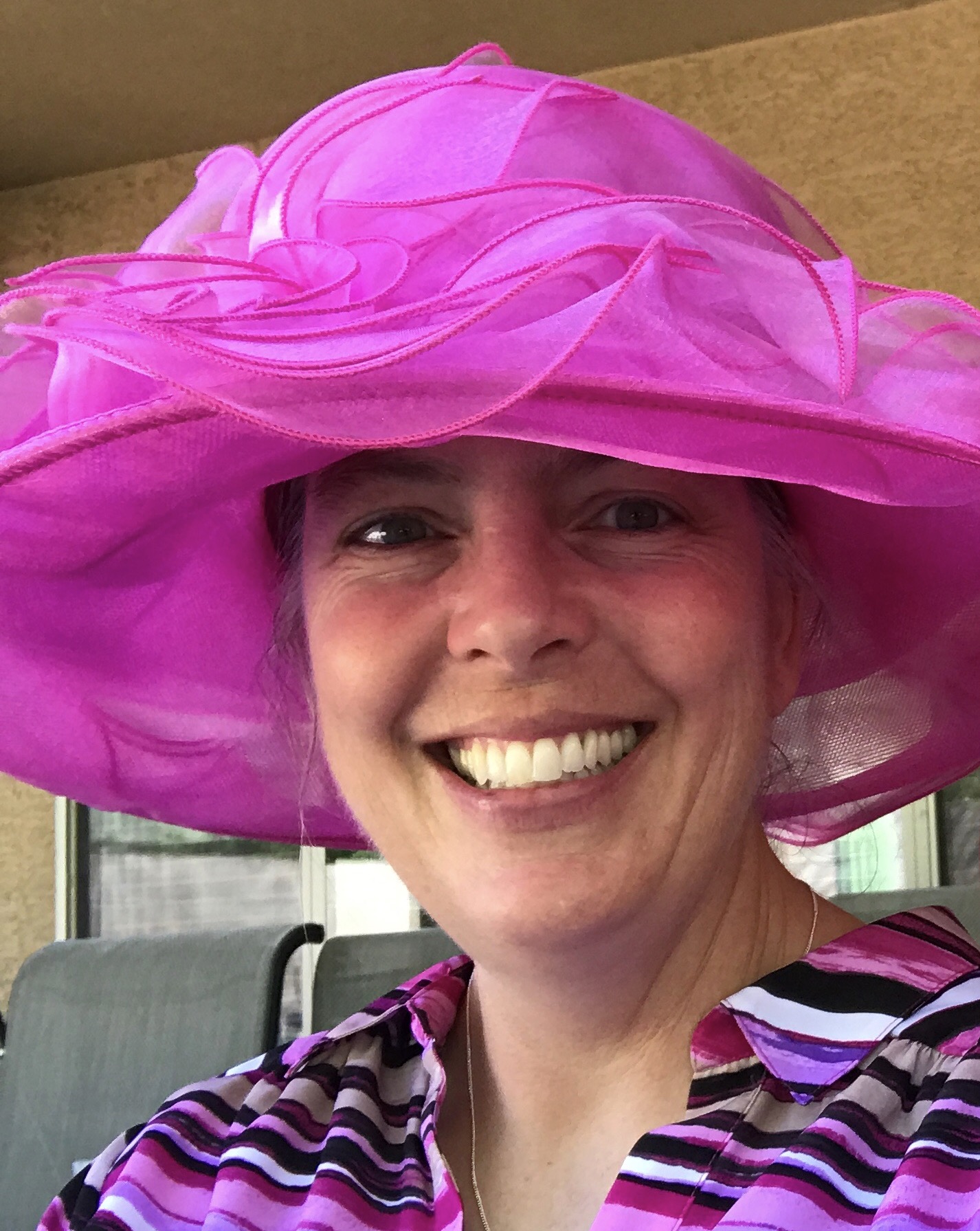
0 Comments